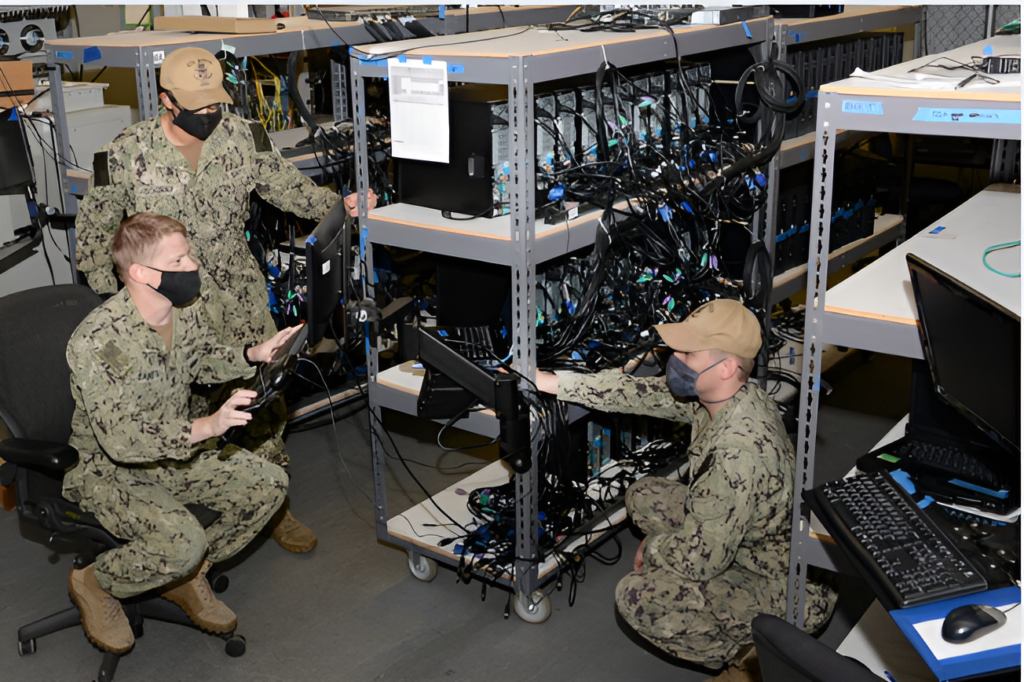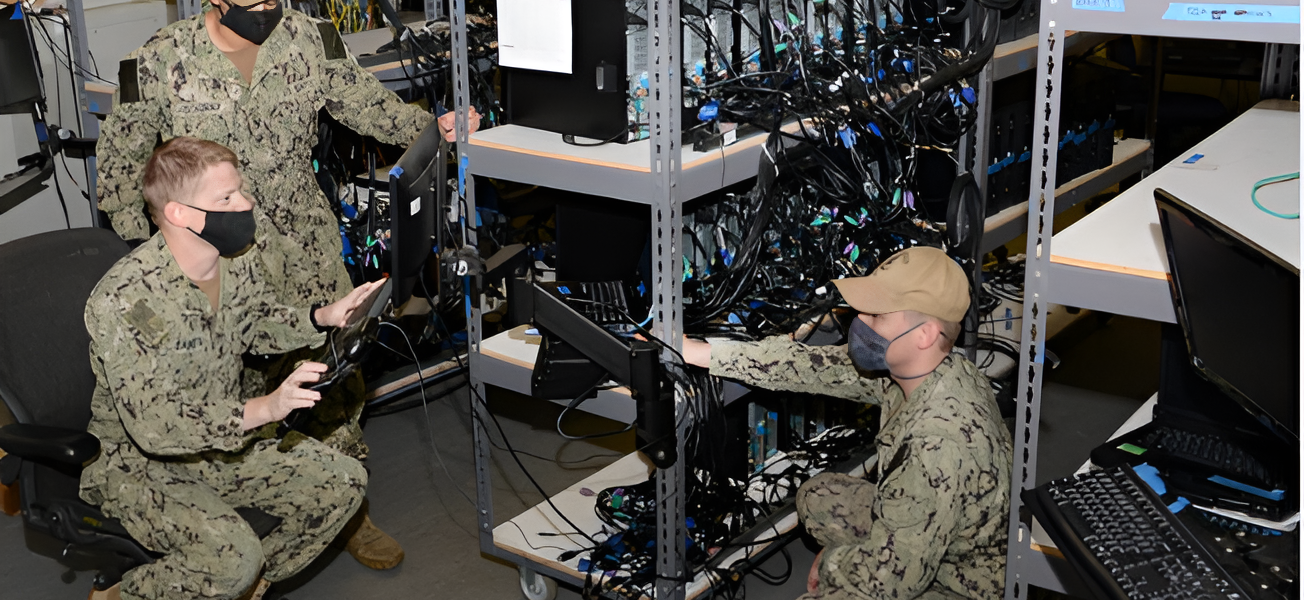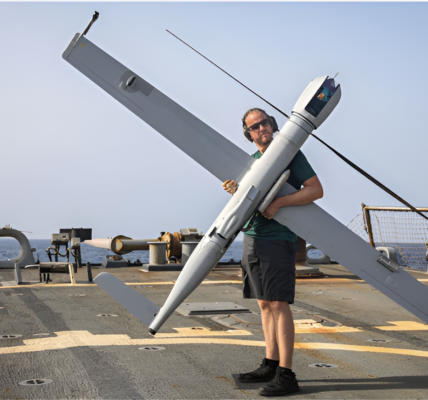
It may surprise some to learn that the captains of the U.S. Navy’s most advanced and expensive combat ships — aircraft carriers — are not surface warfare officers with years of command experience on other naval vessels. Instead, they are often career naval aviators. This is not due to a singular focus on aviation; rather, it reflects the fact that launching and recovering aircraft is the most important function of a carrier, its raison d’etre. But to successfully manage a carrier requires a broad range of expertise: from navigation and air defense to the operation of a multi-billion-dollar nuclear reactor.
This analogy offers a fresh perspective on U.S. defense modernization — the sprawling, bureaucratic system tasked with acquiring new military technology. Since the end of World War II, the major contractors in defense have primarily been aerospace and shipbuilding giants. This focus on hardware is understandable: for decades, the most critical military capabilities revolved around designing, manufacturing, and integrating physical systems. However, as modern warfare increasingly hinges on software-driven capabilities — such as artificial intelligence, data fusion, and networked systems — the question arises: Is it still the best model to rely primarily on traditional, hardware-centric defense contractors?
While U.S. defense contractors have long dominated the hardware side of military technology, software is increasingly critical to the success of modern defense systems. From legacy systems to next-generation capabilities, future combat will depend on the seamless integration of diverse technologies — across land, air, sea, space, and cyberspace. The war in Ukraine, for example, has shown how advanced software, artificial intelligence, and emerging technologies can change the tide of battle. While Ukraine’s innovation on the battlefield has been impressive, much of the software that underpins these efforts comes from smaller, nimble tech firms, rather than the large, traditional defense primes.
Looking to the future, particularly in the Indo-Pacific region where competition with China could intensify, software-powered warfare will be essential to maintaining a competitive edge. While U.S. hardware will remain among the best in terms of speed, stealth, precision, and range, the real strategic advantage will lie in the ability to integrate systems through smart software that enables rapid, informed decision-making. As the Defense Innovation Board noted, “Software is leveling the playing field with our rivals, eroding the advantages we have spent many decades accruing.” The ability to make fast, data-driven decisions will be paramount.
The Software Challenge and Opportunity
Despite software’s growing importance, integrating software into defense systems has been a challenge for over a decade. For example, costly delays in major weapons systems — such as the F-35 Joint Strike Fighter and the aerial refueling tanker — were often due to difficulties in integrating software with hardware. The F-35, for instance, has been described as “a computer that happens to fly.” As these examples show, modern weapons are becoming more reliant on software to deliver their true potential, yet the Defense Department’s approach to software procurement remains slow and cumbersome.
The commercial sector has long recognized software as the core component of advanced technologies, with companies like Tesla leading the way in integrating cutting-edge software with hardware in electric vehicles. Similarly, small satellites depend heavily on connectivity and software that can be upgraded regularly, offering a model for how to innovate and improve over time.
The Department of Defense, on the other hand, has historically treated software as an afterthought, or as an enabling feature that is added on to a completed hardware system. This practice, however, no longer makes sense in an era where software drives the capabilities of new military systems. Just as Tesla uses software as the backbone of its hardware, the Department of Defense must shift its approach to prioritize software from the outset of new system designs. This is where the concept of a “software prime” comes into play.
What Is a Software Prime?
A software prime is a software-focused company that serves as the lead contractor for a defense project. Unlike traditional contractors, whose expertise is primarily in hardware, a software prime’s core competency lies in developing and integrating the software that will ultimately drive the success of a system. The software prime would not only manage the development of the software but also lead a team of subcontractors to integrate the necessary hardware components.
This approach would allow the Department of Defense to rapidly produce systems that leverage the software capabilities already proven in the commercial sector. The shift to using software primes would shorten the timeline for delivering new capabilities, enabling faster and more flexible adaptation to evolving mission needs. This model would also embrace modularity, which has already shown promise in the military, such as in the Navy’s adoption of open architecture systems for its attack submarines in the 1990s. Today, the importance of modularity is being recognized once again, particularly for systems that must remain adaptable over time.
However, this new model would not replace traditional hardware contractors, especially for the most complex and high-cost programs, such as fighter jets and submarines. Instead, the role of software primes would be to focus on the software components of these mega-programs, allowing hardware contractors to continue overseeing the majority of the development. This approach would enable more rapid iterations and updates to software without the constraints of hardware timelines, ultimately creating more agile and capable systems.
Setting the Stage for Software Primes
For the shift towards software primes to succeed, both government and industry must embrace a change in culture. Within the Department of Defense, leadership must recognize that software is a competitive advantage, and that software companies have the expertise to lead in areas where it will be the determining factor. Furthermore, closer collaboration between hardware and software firms will be essential. This collaboration should be incentivized, with top-down pressure from senior leadership to promote partnerships that bridge the gap between the two sectors.
In the near term, we will likely see software primes involved in smaller, unmanned platforms, where software is the key determinant of success. In these areas, the Department of Defense can begin to experiment with software primes, refining the model and proving its effectiveness. As this approach gains traction, it could eventually expand to larger systems, providing a flexible and modular framework for future defense acquisitions.
If the U.S. is to maintain its technological edge in a world increasingly defined by software, it must leverage its strengths in this area. By embracing software primes and integrating their capabilities into defense acquisition from the start, the United States can better position itself for success on tomorrow’s digital battlefield.


